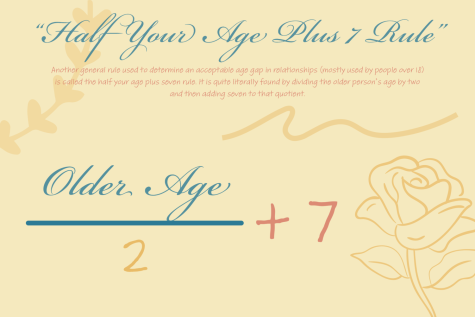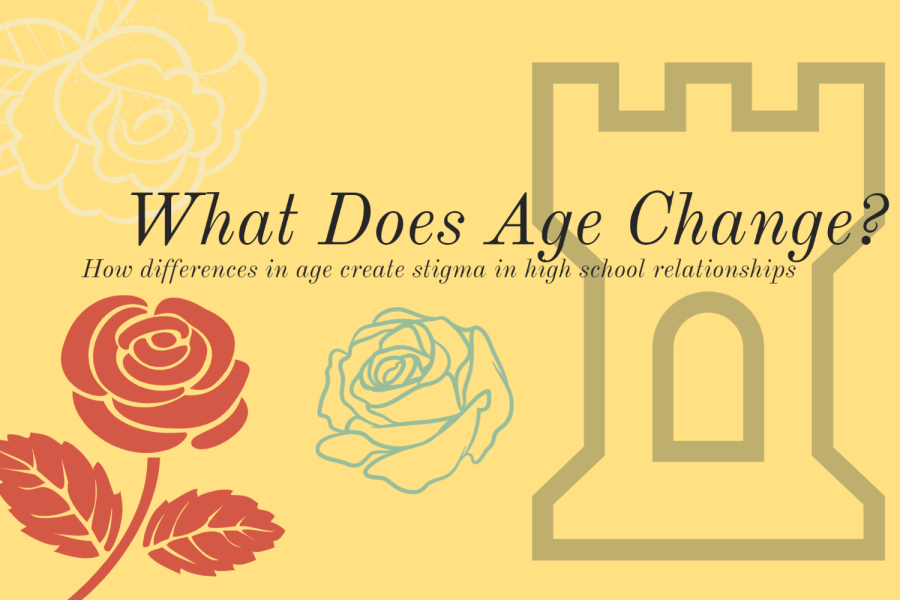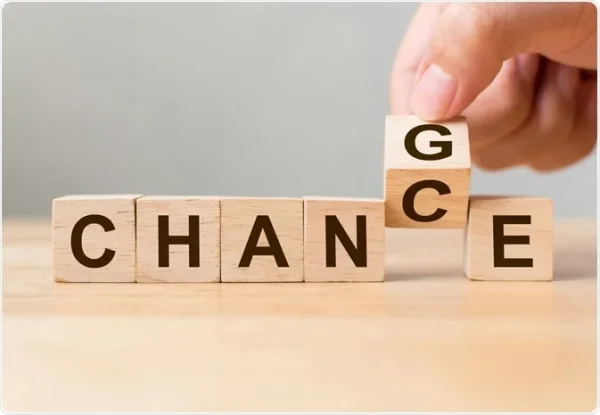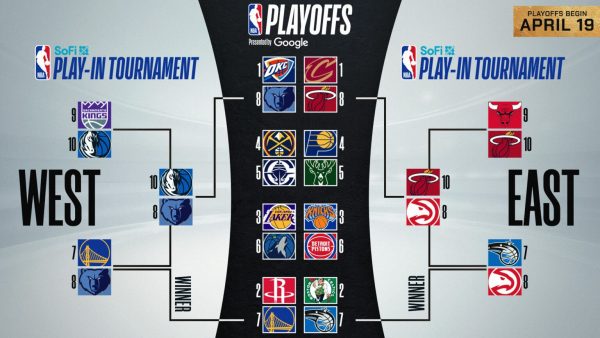What does age change?
How differences in age create stigma in high school relationships
Dating is a pivotal part of teenage life, a time of exploration and becoming more in tune with yourself by learning how to properly interact with others. Oftentimes, dating in high school is a new experience and a deep dive into unknown waters, an uncertain time where you have to learn as you go. Due to this guesswork, it becomes a little rocky to comprehend what is and is not acceptable in these new romances with arguments arising from outside parties on issues. One of the largest of these controversies about adolescent dating, especially in high school, happens when questioning what is and is not an acceptable span of age between the lovebirds.
There are plenty of factors that shape a person’s beliefs on age range in adolescent relationships including the jurisdiction of state laws and also what the people that surround them believe about the topic. Mostly, however, these opinions are situational and can change depending on which couple is in question.
So What’s the Difference?
Differences in age being an issue is definitely a more recent phenomenon compared to a majority of human history. In fact, “dating” wasn’t actually a common thing until the late 19th century itself. Before then, arranged marriages were frequent and the core way that people were considered “together” after marriage became an institution. Overall, we are on new turf trying to explore a realm that is only a little over a century old. When it comes to the people themselves, too, the differences and stigma tend to become very situational.
For one, school age (which people often go by when judging a high school relationship) can become very different from a person’s actual age very fast. For example, somebody who is an older sophomore could be dating a very young senior. This leaves a two year age gap grade-wise, yet the senior is only a little more than a year older in physical age. This issue could then be applied in other scenarios where a three year school age gap has a physical age difference of only two and so on. This makes the “school age” ideal pretty volatile and unreliable in many cases.
Similarly, there is a large stigma behind people dating outside of highschool when it comes to dating a middle schooler or a college student when the ages are similar to that above. Oftentimes, freshmen or sophomores don’t want to be seen dating middle schoolers even though they are similar in age just as juniors and seniors avoid dating college students. Even graduation blurs the lines, one member of the relationship now seen as “too old” to date their high school counterpart in the eyes of peers and even adults. Most of the romance is therefore confined in the walls of high school, leaving little room to branch out and meet others.
What the Law Says
Another large factor playing in the age-relationship game is the law. Laws on age ranges in a physical setting are largely dependent on the state that the relationship is occurring in. Texas law, however, relies on the Romeo and Juliet law which states that anyone between the age of 14 and 17 can legally consent to anyone within three years of their age. After the age of 17, the Romeo and Juliet law no longer applies as long as you date someone older than yourself.

Even though these laws only apply within the parameters of physical contact, they become a good rule of thumb to go by when considering who should be off limits in an adolescent relationship. Even though a person may be “more mature” or “more adolescent” mentally, there really is no need to be dating someone four or more years younger when only one of or both of you are considered minors. Down the line, if you continue dating, this gap could put strain on your relationship over future plans or even put you or your partner into the threat of getting into trouble with the law.
After High School
Overall, this phenomenon is a strange one, only seeming to hold up within the confines of a middle and high school setting. After graduation, this concept of having to date within at least a year or two of the next person suddenly opens up into a whole world of fish in the sea. Suddenly, it’s seen as much more “socially acceptable” to date someone who is three to four years older despite previously being confined to one or two.
With this in mind, it is important to remember that all stories are different and are due their own understanding before making passive stigmas and judgements. It is completely fine to try out this whole dating thing in high school, but you must remember to put yourself first and hold true to your boundaries.

Carolyn Gilbert is a third-year staff member and is now the editor in chief and magazine editor of Bridgeland’s Student Media site and magazine for the...










